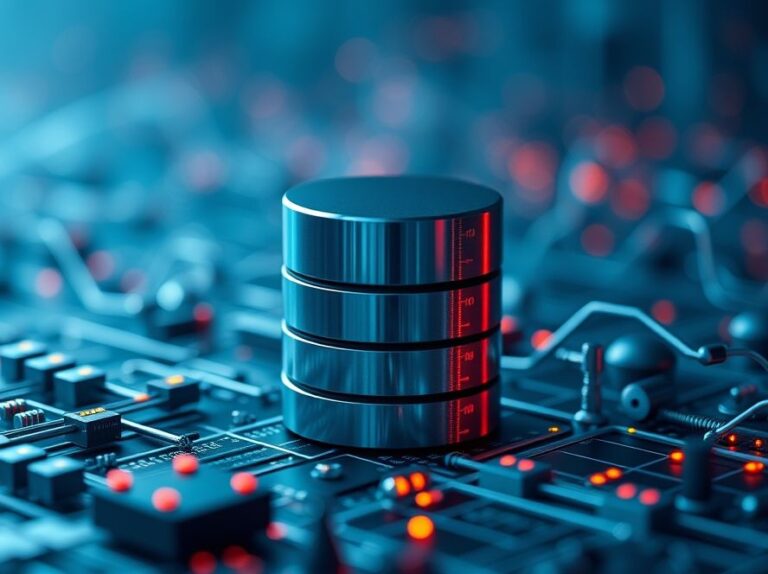Understanding NoSQL vs SQL: A Comprehensive Guide
In the world of data management, NoSQL and SQL databases represent two distinct approaches to storing and retrieving data. Understanding the differences between these two paradigms is crucial for developers, data scientists, and organizations looking to optimize their data architecture. This guide will provide a clear definition, detailed explanations, and practical applications of NoSQL and SQL databases.
Defining NoSQL and SQL
SQL, or Structured Query Language, databases are relational databases that use a structured schema to define data relationships. They are built on a table-based system where each row represents a unique record, and each column represents a data attribute. SQL databases are known for their strong consistency, ACID (Atomicity, Consistency, Isolation, Durability) properties, and powerful query capabilities.
NoSQL, which stands for “Not Only SQL,” encompasses a variety of database technologies that do not adhere to the strict schemas of traditional relational databases. NoSQL databases can be document-based, key-value stores, wide-column stores, or graph databases. They are designed to handle large volumes of unstructured or semi-structured data and excel in flexibility, scalability, and performance.
Key Differences Between NoSQL and SQL
| Feature | SQL Databases | NoSQL Databases |
|---|---|---|
| Data Structure | Relational (tables) | Non-relational (various types) |
| Schema | Fixed | Dynamic |
| Scalability | Vertical | Horizontal |
| Transactions | ACID compliant | Eventual consistency |
| Query Language | SQL | Varies (e.g., MongoDB uses BSON) |
Real-World Use Cases of SQL Databases
SQL databases are widely used in scenarios where data integrity and complex transactions are paramount. Here are some practical examples:
- Banking Systems: SQL databases manage customer accounts, transactions, and balances, ensuring accuracy and reliability.
- Customer Relationship Management (CRM): Businesses leverage SQL databases to track customer interactions, sales data, and reporting.
- Enterprise Resource Planning (ERP): SQL databases are essential for integrating various business processes, including finance and supply chain management.
Real-World Use Cases of NoSQL Databases
NoSQL databases shine in applications that require scalability and flexibility. Here are several real-world applications:
- Social Media Platforms: NoSQL databases handle the vast amounts of user-generated content and real-time updates efficiently.
- Big Data Analytics: Companies use NoSQL databases to store and analyze large datasets, enabling data-driven decision-making.
- Content Management Systems: NoSQL databases manage diverse content types and can adapt to changing requirements without downtime.
Choosing Between NoSQL and SQL: Factors to Consider
When deciding between NoSQL and SQL databases, consider the following factors:
- Data Structure: Assess whether your data is structured or unstructured. SQL is ideal for structured data, while NoSQL is better for unstructured or semi-structured data.
- Scalability Needs: Consider whether your application needs to scale vertically (adding resources to a single server) or horizontally (adding more servers).
- Consistency Requirements: Determine if your application needs strict consistency (SQL) or can tolerate eventual consistency (NoSQL).
- Development Speed: NoSQL databases often allow for faster development cycles due to their flexible schemas.
Practical Applications: How to Use NoSQL and SQL in Your Day-to-Day Work
Understanding how to implement NoSQL and SQL in practical scenarios can enhance your projects:
- Prototype Development: Use NoSQL to quickly build and iterate on prototypes due to its flexible schema.
- Data Migration: When transitioning legacy systems to cloud-based infrastructure, evaluate whether SQL or NoSQL fits your data needs better.
- Data Warehousing: Utilize SQL databases for data warehousing solutions that require complex queries and reporting.
Related Concepts in Data Management
To fully grasp the NoSQL vs SQL debate, it’s essential to understand several related concepts:
- Database Management Systems (DBMS): Software that interacts with end-users, applications, and the database itself to capture and analyze data.
- Data Warehousing: The process of collecting and managing data from various sources to provide meaningful business insights.
- Data Lakes: A central repository that allows you to store all your structured and unstructured data at any scale.
Conclusion: Making the Right Choice for Your Data Needs
Choosing between NoSQL and SQL databases can significantly impact your applications and business operations. By understanding the fundamental differences, real-world applications, and considerations for each type, you can make informed decisions that align with your organizational goals. Whether you opt for NoSQL’s flexibility or SQL’s reliability, both database technologies have unique advantages that can be leveraged for success.
As you continue to explore the world of databases, reflect on your specific data requirements and how you can implement the knowledge gained from this guide in your projects. The right database choice can empower your applications and enhance user experiences.









